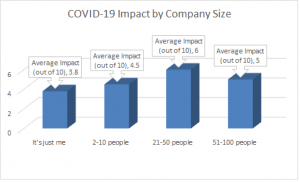
Seeing the majority of your early payments going towards interest rather than the principal can be a Accounting Periods and Methods real eye-opener, like finding out pizza isn’t the healthiest meal (bummer, right?). But don’t worry, as long as you stick to the plan, you’ll eventually flip the script. Once you know your monthly payment, you can create an amortization schedule that shows how much of each payment goes toward interest and how much goes toward the principal. Fixed-rate mortgages usually have the longest terms—typically up to 30 years—followed by home equity loans, auto loans, and then personal loans. In the early stages of an amortizing loan, a larger portion of your payment goes toward interest.
- It aims to allocate costs fairly, accurately, and systematically so that financial records can offer a clear picture of a company's economic performance.
- Although it decreases the asset value on the balance sheet, it does not directly affect the income statement like an expense.
- Refinancing is the process of taking out a new loan to pay off an existing loan.
- However, the Tax Cuts and Jobs Act (TCJA) in 2017 has changed how they can be expensed.
- A good way to think of this is to consider amortization to be the cost of an asset as it is consumed or used up while generating value for a company or government.
- Accountants use amortization to ensure that the cost of the intangible asset is matched with the revenue it generates.
What Is an Amortization Schedule? How to Calculate With Formula
Even though you can't touch an intangible asset, they're still an essential aspect of operating many businesses. Amortization is the affirmation that such assets hold value in a company and must be monitored and accounted for. When looking at loans for your company, some things to consider are interest rates, as well as the debt covenants of business loans and the financial leveraging of said debts. Firms must account for amortization as stipulated in major accounting standards.

Is Amortization an Asset?

In such cases, you may find amortization is a beneficial accounting method. However, the rules and regulations regarding the tax deductibility on these expenses differ between amortization explained jurisdictions depending on the asset's nature. For example, some countries allow this deduction for specific intangible asset types like patents or copyrights, while others may have more specific criteria or restrictions on these tax deductions. Amortization reflects the fact that intangible assets have a value that must be monitored and adjusted over time. The amortization concept is subject to classifications and estimates that need to be studied closely by a firm’s accountants and auditors, who must sign off on financial statements. The amortization period is based on regular payments, at a certain rate of interest, as long as it would take to pay off a mortgage in full.

Methods of Amortization

This is done to reflect the gradual loss of value of the asset due to wear and tear, obsolescence, or other factors. The amount of the payment and the length of the loan affect the total cost of the loan. Refinancing is the process of taking out a new loan to pay off an existing loan. Refinancing can be used to get a lower interest rate, to change the length of the loan, or to change the type of loan. This information can be used to determine how much equity they will have in the property or asset at the end of the loan term. This type of amortization refers to the recovery of the investment costs through the income generated.
How To Apply For A Mortgage
Each episode (payment) reveals more of the story, reducing your debt, and inching you closer to that finale where you’re debt-free and Retail Accounting the credits roll. All in all, amortization is more than just a hefty word on your mortgage statement; it’s a financial compass that guides you toward true home ownership. Surviving the twists and turns of a loan is akin to setting sail toward financial independence. By demystifying the concept and embracing its strategic value, you’re already on the right course to reach those fiscal milestones on the horizon. Not all loans are created equal, and the type of loan you choose can affect how your payments are structured.
- If you have a fixed-rate mortgage, the amount you pay each month toward principal and interest together will stay the same.
- They illustrate the distribution of each payment between interest and principal, offering borrowers a clear picture of their financial commitments.
- A company switching between methods without justification may raise concerns about its financial reporting accuracy.
- On the other hand, the IASB governs accounting practices on an international scale with its creation of the International Financial Reporting Standards (IFRS).
- These policies and regulations are crucial to the smooth operation of amortization processes.
